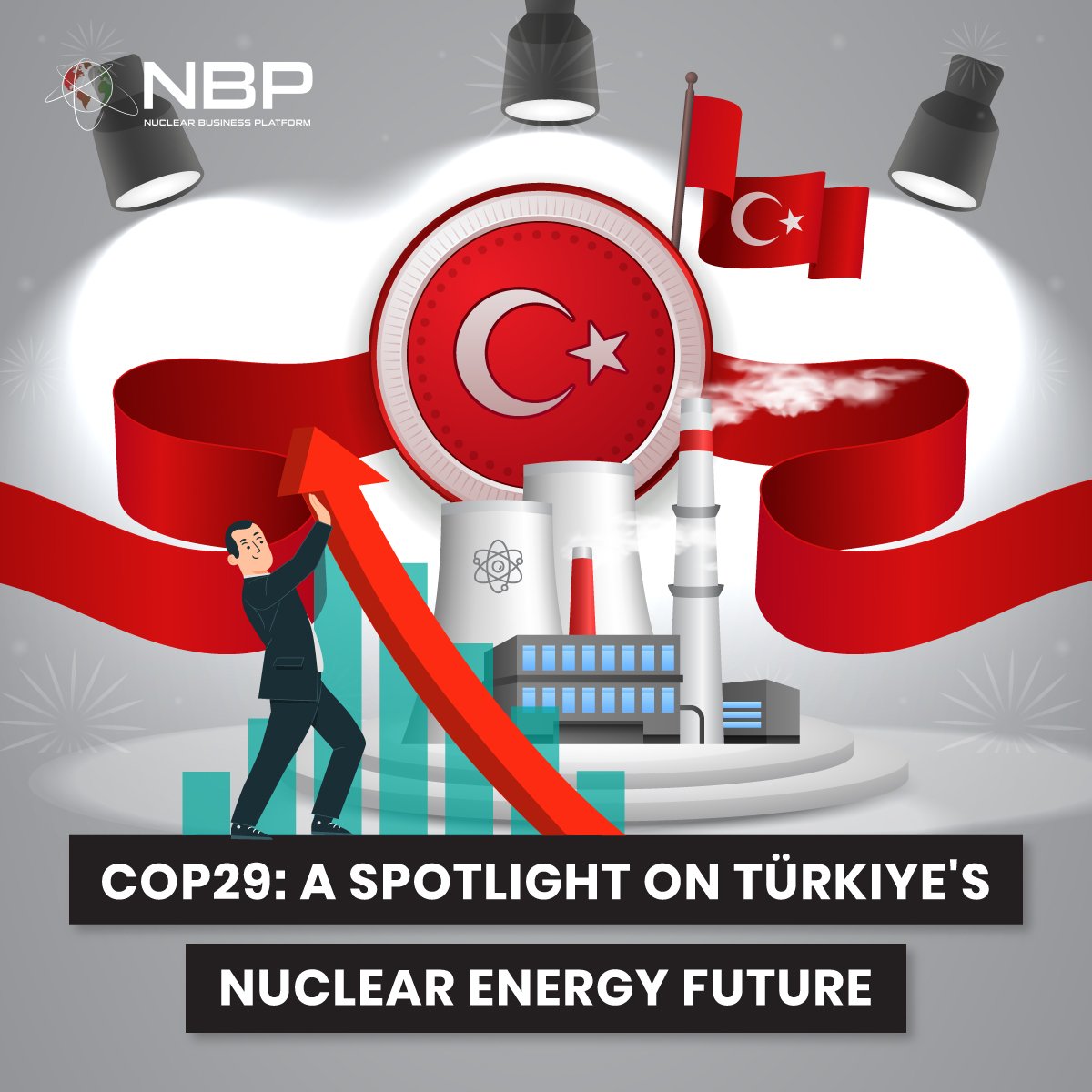COP29: A Spotlight on Türkiye's Nuclear Energy Future
The United Nations Climate Change Conference (COP29) in Baku, Azerbaijan, has elevated nuclear energy as a cornerstone in discussions on global decarbonization efforts. Türkiye stands prominently among the six new nations—El Salvador, Kazakhstan, Kenya, Kosovo, Nigeria, and Türkiye—that have joined the "Declaration to Triple Nuclear Energy by 2050." This move cements Türkiye’s role in shaping the future of clean, reliable power as it continues to expand its nuclear energy initiatives.
Türkiye’s Growing Energy Demands
With rapid economic growth and an increasing population, Türkiye’s energy demands have surged over the past two decades. Türkiye has experienced the fastest-growing energy consumption rate among Organisation for Economic Co-operation and Development (OECD) nations and ranks second globally after China in electricity and natural gas demand increases. This escalating demand underscores the necessity for a reliable, sustainable power supply to fuel its industrial growth and economic development.
Nuclear Energy: A Strategic Pillar
Türkiye’s National Energy Plan (2020–2035) identifies nuclear energy as a critical component of its strategy to enhance energy security and achieve its ambitious electricity generation targets. By 2035, the country aims to increase its total generation capacity to 189.7 GW, with nuclear energy contributing 7.2 GW. Looking further ahead, Türkiye plans to achieve 20 GW of nuclear capacity by 2050.
Central to this vision is the Akkuyu Nuclear Power Plant, a flagship project developed under a Build-Own-Operate (BOO) model by Russia’s state-owned Rosatom. With a capacity of 4.8 GW across four 1.2 GW units and an investment exceeding $20 billion, Akkuyu is poised to meet approximately 10% of the nation’s electricity needs, symbolizing the robust partnership between Türkiye and Russia.
Türkiye’s nuclear aspirations extend with the Sinop Nuclear Power Plant, which plans to add another 4.8 GW of capacity, with four units of 1.2 GW each, through a $30 billion investment. Although Russia leads the bid for this project, South Korea’s Korea Electric Power Corporation (KEPCO) remains a strong contender.
Similarly, the Thrace Nuclear Power Plant, proposed for the Eastern Thrace region in Kirklareli province, aims to add 5.6 GW of nuclear capacity, consisting of four 1.4 GW reactors. China’s State Power Investment Corporation (SPIC) has emerged as the leading bidder for this.
Modular Reactor Technologies: Türkiye’s Future
As Türkiye builds its nuclear capabilities, Small Modular Reactors (SMRs) represent a promising next step. With a target of achieving 5 GW of SMR capacity by 2050, Türkiye seeks to adopt this innovative technology to address diverse energy demands.
At COP29, an event co-hosted by the IAEA and the United States emphasized the potential of SMRs in powering remote communities, data centers, energy-intensive industries, and even commercial shipping. The IAEA projects that SMRs could account for a quarter of new nuclear capacity by 2050. However, as the IAEA noted, “Streamlining the numerous current designs will be critical to reduce manufacturing costs from the first-of-a-kind to the nth-of-a-kind.”
U.S. companies such as Westinghouse Electric Co. are in active discussions with Türkiye to support its SMR goals. Rolls-Royce has also signed a Memorandum of Understanding (MoU) with Türkiye to explore deploying its SMR technology, with projected outputs of 400–450 MWe.
Reassuring Türkiye’s nuclear commitment, Abdullah Buğrahan Karaveli, Chairman of the Executive Board and President of the Turkish Energy, Nuclear and Mineral Research Agency (TENMAK), underscored the nation's dedication to advancing SMR technology alongside traditional large-scale reactors. Addressing the regulatory challenges during the Türkiye Nuclear Business Platform (TNBP) 2023, Ibrahim Halil Dere, Vice President of the Turkish Nuclear Regulatory Authority (NDK), remarked: “NDK is poised to navigate and overcome regulatory challenges by dedicating the necessary resources and efforts to understanding and regulating these varied reactor technologies, including the intricate domain of SMR.”
Financing: Paving the Way for Türkiye’s Nuclear Growth
The financial discussions at COP29 have underscored the critical need for innovative mechanisms to fund nuclear projects. Public-private partnerships, government-backed guarantees, and international funding initiatives have emerged as pivotal solutions to address the high upfront costs of nuclear energy development. Highlighting the importance of accessible financing, IAEA Director General Rafael Mariano Grossi stated: “Finance institutions need to evolve with the changing demands of the market—and there’s a clear demand for and growing interest in nuclear.” He further elaborated: “At COP28 last year in Dubai, countries agreed for the first time that nuclear, together with other low-carbon energy sources, must be part of the solution. Now, at COP29 in Baku, the world must discuss concrete steps to get nuclear from consensus to construction. Financing is central to that conversation.”
To meet the 2050 nuclear capacity targets, annual investments in nuclear energy must raise to $150 billion, three times the current global expenditure of $50 billion per year. The development of innovative financial frameworks could significantly benefit Türkiye’s upcoming nuclear projects, making the country a key beneficiary of these emerging opportunities.
Türkiye’s Role in the Global Nuclear Energy Transition
COP29 has spotlighted Türkiye as a pivotal actor in the global shift toward sustainable and reliable energy solutions. With plans for expanding nuclear capacity, the adoption of SMR technologies, and strategic international collaborations, Türkiye is well-positioned to lead the way in nuclear energy innovation. Platforms such as the Türkiye Nuclear Business Platform (TNBP), an annual conference that brings together global nuclear stakeholders, government bodies, financial institutions, and technology developers, are crucial in driving these efforts.
As Türkiye aligns its national energy strategy with global decarbonization goals, the outcomes of COP29 promise to play a transformative role in the nation’s energy landscape. By addressing regulatory, financial, and technological challenges head-on, Türkiye is paving the path for a greener, more sustainable future.



